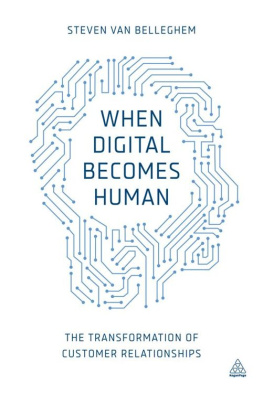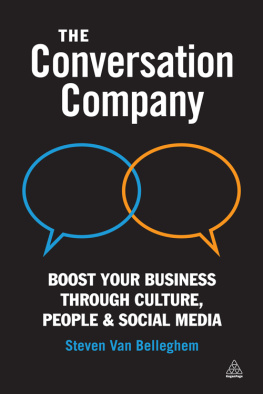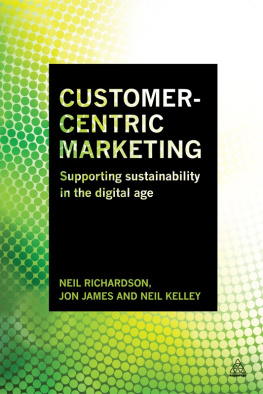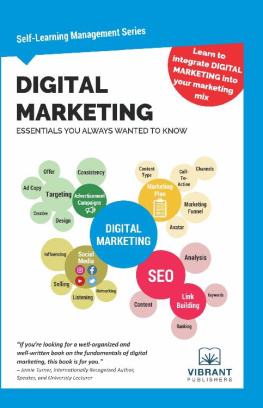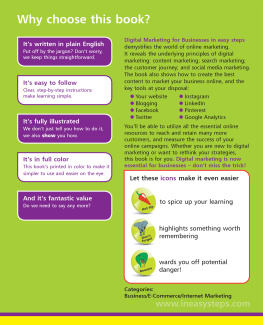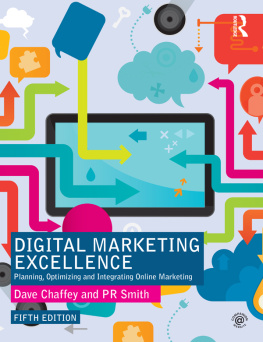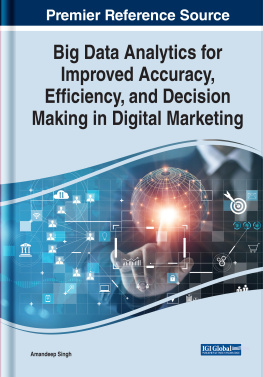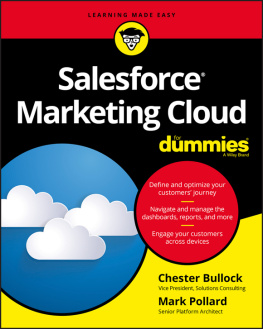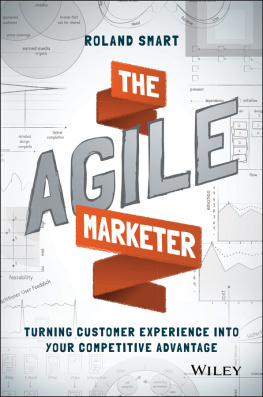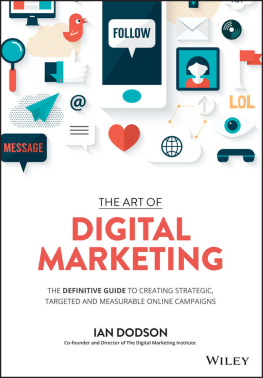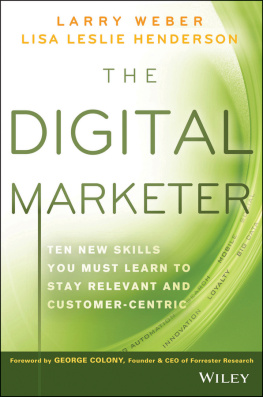Note on the Ebook Edition For an optimal reading experience, please view largetables and figures in landscape mode. |
This ebook published in 2015 by
Kogan Page Limited
2nd Floor, 45 Gee Street
London EC1V 3RS
United Kingdom
www.koganpage.com
Steven Van Belleghem, 2015
E-ISBN 978 0 7494 7324 2
contents
Economic growth and population growth
Comparison of the old and new adoption curve
Digitalization in the online and offline worlds
The When digital becomes human quadrant
Digital first = customer first model
Channel central versus customer central
A digital ecosystem
Self-service in all phases of the purchase process
Big relevance model
The benefit for the customer and the company in balance
The When digital becomes human quadrant
The When digital becomes human model: the four necessary steps
Prove you are human
Digital and human Venn diagram
Heartketing
Rabo online mortgage service
Model: crowd power in the customer relationship via the four options
The When digital becomes human quadrant
The final quadrant
When digital becomes human
T his is my third management book. On each occasion, putting down my thoughts on paper has been a very emotional process. The feeling of excitement you get when you send off your manuscript for assessment by experts, family and friends is like no other feeling in the world. I would like to thank everyone who has helped me directly or indirectly to make the completion of this book possible. Thank you also to all the readers who have taken the trouble to read the end result. I hope it proves to be a source of inspiration to you all.
In particular, I must begin by thanking my most important reader, my wife Evi Seymortier. Evi and I have been working together in our own company since 1 January 2014. It is a fascinating and enjoyable experience. Thank you Evi for your critical appraisal of the first and subsequent drafts and for your honest and open opinions at all times. Thank you also to our two sons, Siebe and Mathis, who kept us amused and entertained throughout the writing process. Without knowing it, they were an inspiration to us both.
I am also indebted to my other critical readers: Bart De Waele (CEO, Wijs), Chris Van Doorslaer (CEO, Cartamundi), Rudy Moenaert (marketing professor at the TIAS School for Business and Society), Gino Van Ossel (marketing professor at the Vlerick Business School), Harry De Mey (CEO, LDV United), Sam Berteloot (CEO, Sports Ad-X) and my father, Pol Van Belleghem. Your comments were invaluable and have helped to make the finished book so much better.
A big, big thank you to Peter Hinssen for his willingness to write the foreword. I feel honoured. Thanks also for your many suggestions and the many memorable moments of collaboration. They provided me with the inspiration I needed to give my story shape and form.
This book has been strongly influenced by my own research results. For this, I am most grateful to my research partners, SSI (for data collection) and No-Problem (for translations). Your continued support and cooperation are very important to me.
Thanks also to my former colleagues at InSites Consulting. The eleven years I worked there have coloured my life and shaped my opinions. I am especially grateful to Kristof De Wulf (CEO InSites Consulting) and Tim Duhamel (CSO InSites Consulting) for their help and stimulating input.
I am equally grateful to my publishers Peter Saerens (Lannoo Campus), Roderik Teunissen (VanDuuren Media) and Melody Dawes (Kogan Page) for their encouragement throughout the project.
And what can I say about my many clients, Facebook friends and Twitter followers? You have been a source of feedback and inspiration for years. I have enjoyed and still enjoy sharing my time with you each day.
Last but not least, a very big thank you to all my family and personal friends for their support of my work. You have no idea how much it means to me!
T echnology is a vector, wrote Kevin Kelly in his excellent book What Technology Wants . I got to know Kevin at the end of the last century, when he was the boss of Wired , the must-read magazine of the digital revolution. In his magazine high praise of digitalization was sung each month, with information about the latest trends and gadgets and fascinating discussions about their impact on people and companies. It was a great read. But one year, Kevin had had enough of it all. He went to visit a good friend of his who lived in an Amish community and he stayed there for a whole month. A month without the internet, without a telephone, without electricity. A month away from technology.
Technology is a vector. The phrase stuck in my mind. According to Kelly, people are just bit players; they only have a walk-on role in the digital revolution. It is an illusion to think that people shape technology; in reality, it is the other way round. Kelly agrees that technology needs people before it can move on to the next stage of its development, but this does not mean that people are the key factor. We are just the extras, the minor actors in the drama that will allow technology to become what it must. It is an unusual philosophy, but it really set me thinking.
In 2015, it will be exactly 15 years since the first internet bubble burst. The resulting crash in the value of technology shares on the NASDAQ index led many people to believe that the digital revolution was coming to an end. How wrong they were! Fifteen years ago there were no smartphones or tablets, no Twitter or Facebook. And you could only go online via a clumsy modem that made funny ping noises. No, the digital revolution is still very much alive and kicking.
Technology is playing an increasingly important role in all our lives. It is hard to do without it. For the new generation it has become a kind of second language (or sometimes even their first language). These developments are not likely to slow down in the years ahead. Quite the reverse. It would be absurd to think that we have reached the end of the technological road, that Facebook or Twitter, Instagram or Snapchat are the pinnacle of digital development. We are only just beginning. Technology is a vector. And we will help it to develop further much further.
We are living in a fascinating period. This is the age of sub-human intelligence. This means that technology is still slightly more stupid than we are. But this wont be the case for much longer. I recently counted the number of smart appliances I have in my home: there are three. The alarm system is really clever. And the drone is not bad, either. Then there is the lawn mower. It certainly makes my life easier, since I dont need to mow the grass every Saturday afternoon. Whats more, the mowing robot also knows when it is raining or when the grass is too wet. Likewise, it knows the limits and locations of the areas to be mown or when its batteries need to be recharged. Thats pretty smart. But it always gets stuck in the same spot against the base of our terrace table. Stupid robot. Even the moles in our garden are cleverer than that.
But this will soon change. Machines are getting smarter every day. As a general rule, their level of intelligence doubles every 18 months. This means that in the very near future they will be cleverer than the moles. Within a matter of years, they will also be cleverer than us humans. Thats pretty scary. I can still recall the first computer we had in our house. A single, stand-alone unit. Now everyone in our family has at least four connected devices. Technology is a vector and we are evolving more slowly than the technology around us.

